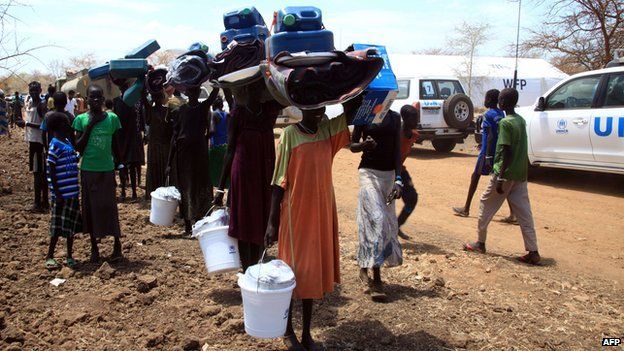UN: Over one million displaced by South Sudan conflict
- Published

More than one million people have been forced from their homes by the ongoing conflict in South Sudan, the UN says.
Of these, 803,200 have been displaced within the country, and another 254,000 have fled to neighbouring countries, according to the latest UN report.
It warns that the situation is likely to get worse as the violence continues.
Fighting erupted between the forces of President Salva Kiir and troops loyal to his former deputy, Riek Machar, in December.
The two sides signed a ceasefire agreement in January, but sporadic fighting has continued.
Food security
In its report, the UN Office for the Coordination of Humanitarian Affairs (OCHA) said the conflict had caused "a serious deterioration in the food security situation" leaving around 3.7 million people at high risk.
"Fighting between government and opposition forces has continued, especially in Jonglei, Unity and Upper Nile state, where towns and rural areas have been ravaged by the violence," it added.
The UN estimates that 4.9 million are in need of humanitarian assistance, but it warned that "the remote and dispersed placement sites make it difficult to reach many of South Sudan's conflict-affected people".
In its report, the UN says it has received only a quarter of the money it needs to respond to the growing crisis.
The violence erupted on 15 December between pro-government forces loyal to President Salva Kiir and soldiers backing Riek Machar, his former vice-president.
President Kiir is a member of South Sudan's largest ethnic group, the Dinka, while Mr Machar is from the Nuer community - the country's second largest.
The conflict has seen reports of mass killings along ethnic lines even though both men have prominent supporters in their rival's community. Thousands are feared to have died since the conflict began.
Four top South Sudanese politicians have since gone on trial accused of plotting a coup against the government and inciting an insurgency in South Sudan.
South Sudan seceded from Sudan in 2011 after a long and bloody conflict, to become the world's newest state.